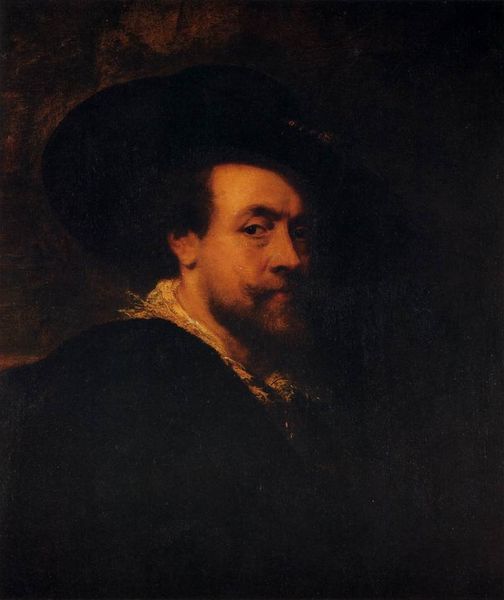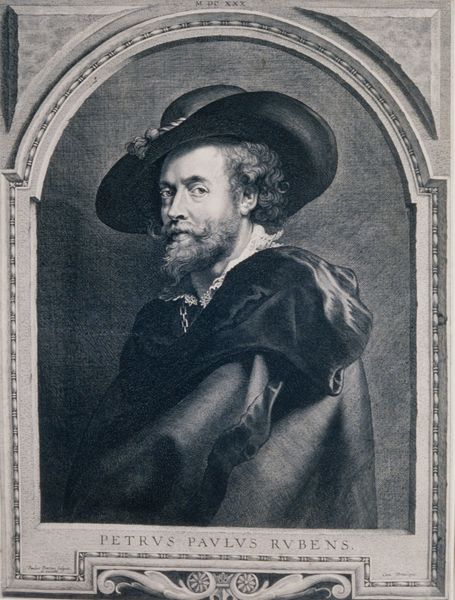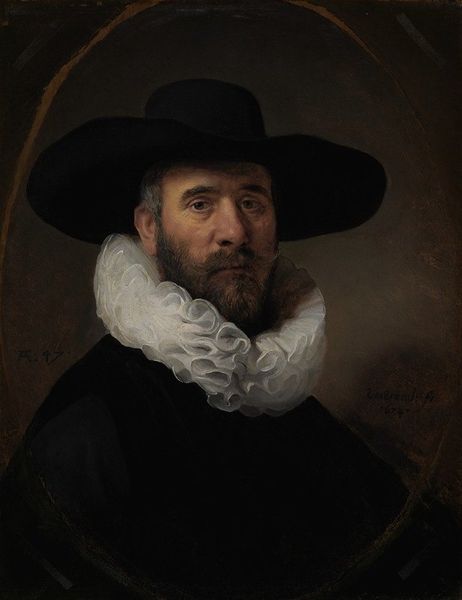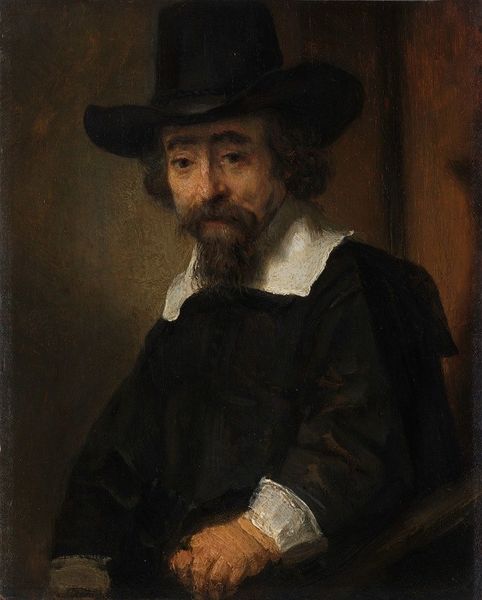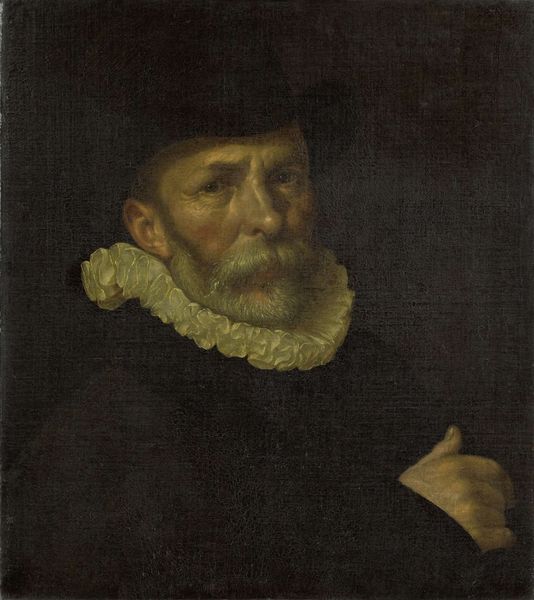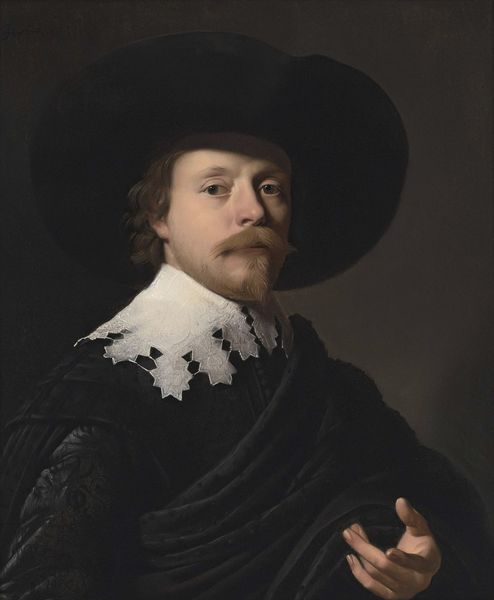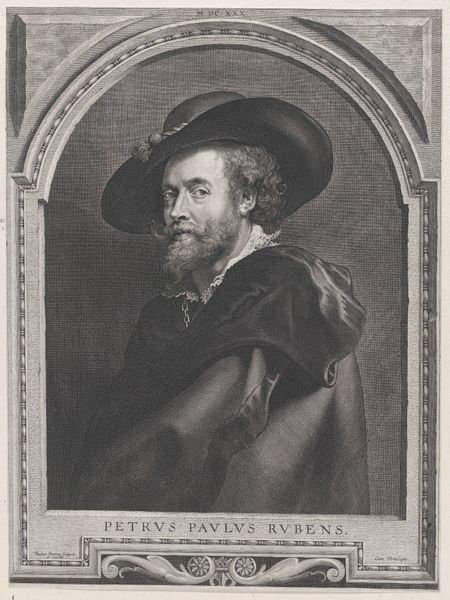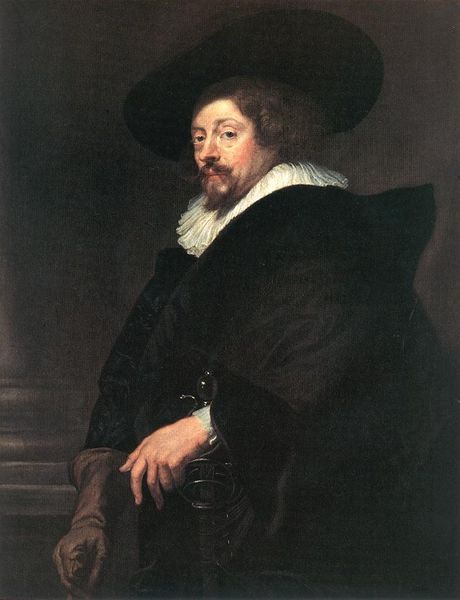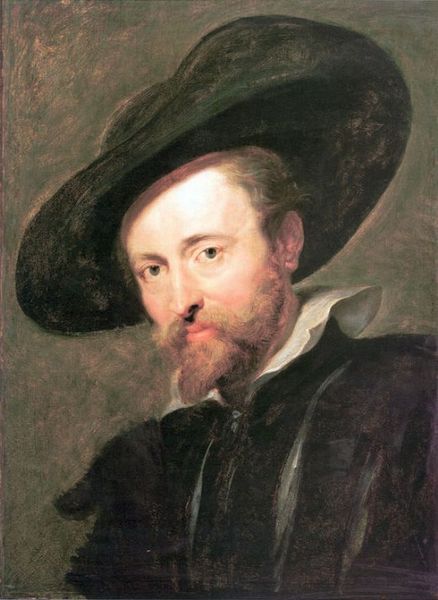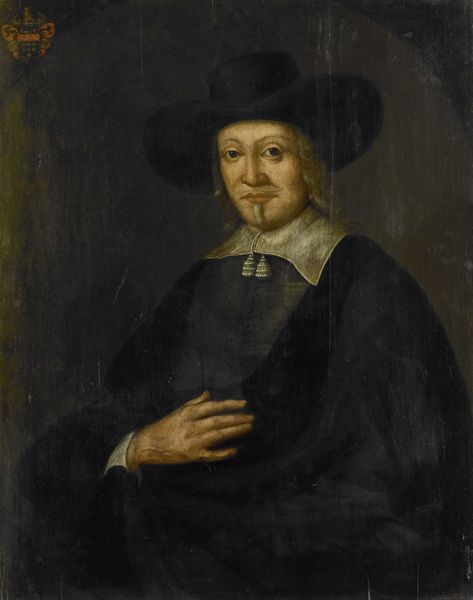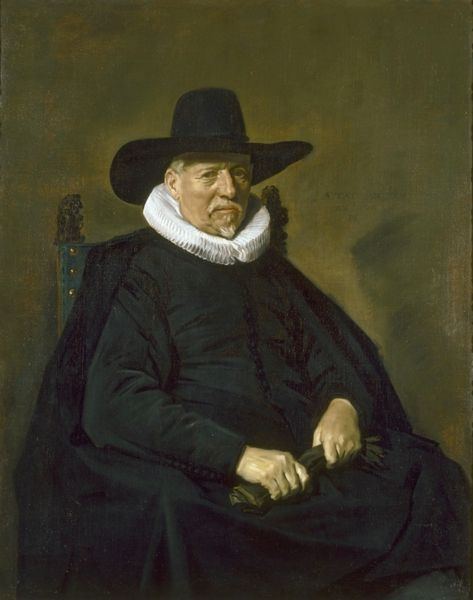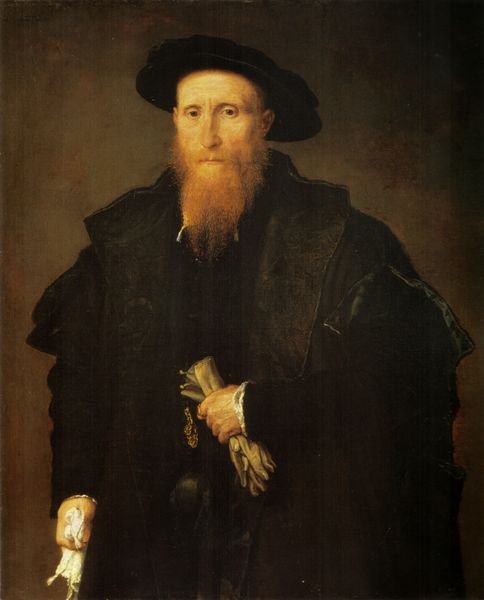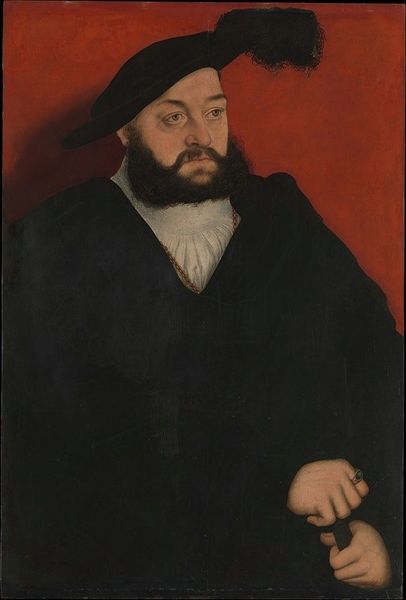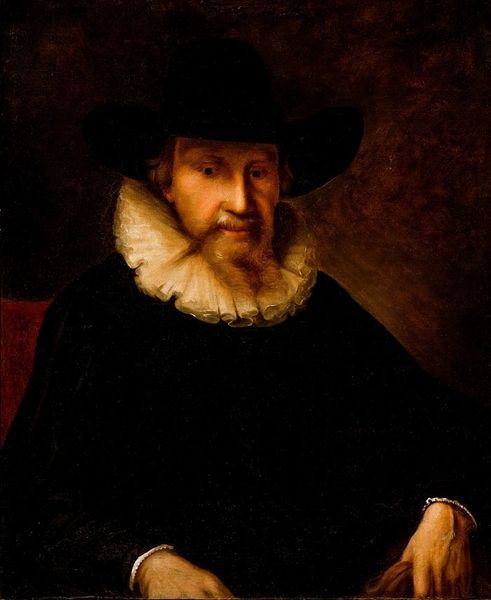
painting, oil-paint
#
self-portrait
#
baroque
#
painting
#
oil-paint
#
history-painting
#
self portrait
Dimensions: 62 x 86 cm
Copyright: Public domain
Curator: Looking at this, I am struck by the sitter’s assuredness. There’s an intensity and elegance emanating from this Baroque portrait. Editor: Indeed. We are viewing "Self-portrait" by Peter Paul Rubens, completed in 1623, now housed at the National Gallery of Australia. His confident gaze captures me, though the painting's sombre color palette suggests a deep inner reflectiveness, doesn't it? Curator: The colors, I find, ground the painting in a socio-historical context. His refined features speak volumes of his standing, his artistic prominence positioning him at the nexus of power, and privilege. Is the clothing perhaps representative of the somber times? Editor: Precisely! Black was more than just a fashion statement. Here, black embodies dignity and authority—essential in projecting the artist's image, while that very wide-brimmed hat adds a touch of bohemian flair—it almost hides him, it keeps the viewer guessing. His attire echoes the dress codes adopted by the elites of the time. He does a fantastic job communicating how the status of court painters evolved throughout history, doesn't he? Curator: It also acts as an echo to the Baroque’s emphasis on drama and emotional intensity! Considering the historical narrative, the black color could easily become a tool, amplifying the narrative of Rubens, as a celebrated and elevated individual during his life. This is amplified by the painting medium: oil. He has incredible agency here, doesn't he? Editor: Absolutely! It also serves the symbolism within the frame. This Self-portrait, so meticulously rendered, reflects his mastery, while capturing both the era’s spirit and the artist’s vision, as it blends humanism, innovation, symbolism, cultural norms... I could go on! Curator: It’s a complex interplay, one that I find thought-provoking every time. Editor: I agree; it truly underscores the multi-layered language of portraiture and its endless reinterpretations throughout history.
Comments
No comments
Be the first to comment and join the conversation on the ultimate creative platform.
